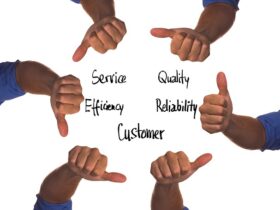It’s about relationships in business. Behind every sale, engagement, and success story is a connection moment in which trust is built between a business and its customer. The big question remains, though: How do companies keep those relationships alive while the company grows? Enter the CRM systems: Customer Relationship Management systems help businesses manage and nurture customer connections, turning one-time interactions into lifelong relationships.
From simple Rolodexes to sophisticated, AI-driven platforms, CRM has come a long way. In the following article, we will journey into the evolution of CRM; discuss precisely how it has transformed over time, and also why CRM is more important today than ever. Along the way, I give my insights and show how CRM systems keep shaping the way we connect with customers.
What is a CRM System, and Why Does it Matter?
Before we get to the history, let’s start with a simple definition: A CRM system is a tool that helps businesses manage customer interactions, track data, and ultimately improve relationships. It’s the digital memory bank for every conversation, preference, and interaction each customer has with a company.
It is necessary to have CRM systems because they help businesses provide personalized service, increase customer satisfaction, and raise the chances of gaining loyal customers. In the competitive market of today, knowing your customers’ needs and preferences isn’t a nice-to-have but a must.
I remember the first time I used a CRM system. It was basic, with limited functionality, but it instantly flipped how I connected with clients. All their data was at my fingertips now: past discussions, notes, and follow-up dates. I felt like I had a superpower helping me remember things that would otherwise slip my mind. This was the point when interest in CRM systems began to grow, but also a fascination with how all that shaped relationships with customers.
The Early Days of CRM: Rolodexes and Contact Lists
The concept of CRM began long before computers. Think about it: customer data was once housed on paper lists, notebooks, and Rolodexes. Salespersons used memory and handwritten notes, and relationship building in customers meant making each client feel like they were the only one.
Rolodexes and Contact Books: The Rolodex, in the 1980s, became synonymous with networking – a revolving card file holding the customer database. Sales reps flipped through their Rolodexes to find clients and took down notes on every interaction. Simple and effective.
But as the companies grew, so did the need for a more formal way of handling customer relationships. Large businesses began to realize their success was directly related to the quality of their customer relationships, and the companies needed a way to store and process client data efficiently.
The Digital Shift: CRM Enters the Computer Age
First, digital steps in CRM were made in the 1980s and 1990s, when computers became more commonplace. Electronics replaced bulky Rolodexes with databases that stored customer information and could hold thousands of times more data. Software programs were developed for this purpose. First CRM systems were primarily used for the automation of the sales force, hence called SFA-Systems supporting the sales forces in tracking contacts, leads, and interactions.
The 1990s: The Rise of Database Marketing
With the beginning of database marketing in the 1990s, CRM systems became more sophisticated. Businesses could store larger volumes of customer data and use that information to identify patterns and trends. Marketing teams can segment audiences based on their demographics or purchasing behavior to send out more targeted campaigns.
I remember at the time, I was working for a small company; “database marketing” was this new thing that sounded cool. For the first time, we could understand our customer base in a way that wasn’t possible before. It marked the beginning of personalized marketing, and it felt like a game-changer.
2000s: The Birth of Cloud-Based CRM
It wasn’t until the year 2000 that a complete turnabout was achieved in the history of CRM development: cloud-based solutions were introduced. It started with companies like Salesforce, which allowed businesses to access their CRM data from any device with an internet connection. This shift made CRM accessible for smaller businesses for one thing because it negated the need for high-priced hardware and further maintenance costs.
Example: I remember it-it felt almost surreal when my team finally moved to the cloud version of our CRM. The level of flexibility that came with it was astonishing: updating records in real-time from anywhere, with no longer any kind of headache with storing data on physical servers. It changed the way we worked and improved how we collaborated.
Modern CRM: AI, Automation, and Customer Insights
Fast forward to today, and no business seems to survive without CRM systems. Modern CRM platforms have now become intelligent, amply powered by artificial intelligence and automation to the core, enabling innovation in a company’s approach to building relations with its customers. From predictive customer behavior to automation of routine tasks, modern CRM systems have grown far beyond simple contact management to highly personalized service.
Key Features of Modern CRM Systems
AI and Predictive Analytics: with the use of CRM systems, AI now analyzes customer data to predict behavior. For example, an AI-powered CRM might tell which leads are most likely to close, therefore allowing the sales teams to focus their efforts where they would be needed most.
Automation: Such tasks as data entry, follow-up emails, and appointment setting can all be automated. This saves not only time but also ensures consistency in interactions with customers.
Integration with other platforms: Modern CRMs are integrated with other tools, like social media, e-mail, and e-commerce platforms, into a single hub of customer data and interactions.
Mobile Accessibility: Mobile-optimized CRM applications let the sales and support teams engage with customer data anywhere to be sure they are always prepared to deal with clients.
Customer Insight and Personalization: CRM systems monitor the customer journey, maintaining a record of his or her likes, past purchases, and interaction history. The information obtained will be used to continuously offer experiences that are personalized so customers can engage more and become loyal.
Personal Insight: The moment I implemented a modern CRM with AI
I was amazed by its abilities, as it could foresee the next action of every customer. Knowing when to follow up, understanding the needs of the customers, and having insights at my fingertips became so much easier and helped me build even better relationships.
The Evolution of CRM: From Simple Tools to Powerful Relationship Builders
This transformation of CRM simply reflects the evolution in the nature of the relationships customers are adopting in the digital age. The trend for more personalized experiences and instantaneous responses inspired CRM systems to change with the demands, turning them into strong tools to help companies keep pace with modern-day business momentum.
| Era | CRM Features | Impact on Business |
| 1980s: Rolodex Era | Paper records, handwritten notes | Basic customer tracking, personal relationships |
| 1990s: Digital Transition | Database marketing, digital records | Organized data, and segmentation for targeted marketing |
| 2000s: Cloud-Based CRM | Cloud storage, accessible from anywhere | Affordable for small businesses, improved collaboration |
| Today: AI & Automation | Predictive analytics, integration, personalization | Deep customer insights, automation, highly tailored interactions |
Modern CRM Systems’ Advantages
Beyond only storing data, modern CRM systems provide a host of advantages:
Increased Customer Happiness: CRMs enable companies to provide individualized experiences that increase customer happiness by monitoring past contacts and preferences.
Enhanced Efficiency: By eliminating human labor, automation gives teams more time to concentrate on high-impact projects.
Improved Cooperation: Sales, marketing, and support teams are always in agreement because of centralized customer data.
Improved Decision-Making: CRMs offer insights that support firms in making well-informed decisions through real-time analytics.
Improved Customer Retention: CRMs assist companies in keeping customers and establishing enduring connections by comprehending their demands and habits.
CRM’s Future: AI, Personalization, and Deeper Understanding
CRM systems are expected to improve more in the future, with customer insights and personalization at the forefront. Keep an eye on the following trends:
Hyper-Personalization: By using AI to predict requirements and preferences with previously unheard-of accuracy, CRM systems will be able to provide even more individualized customer experiences.
Voice and Chatbot Integration: To enable more organic interactions and speedier responses, CRMs will increasingly link with chatbots and virtual assistants.
Advanced Customer Journey Mapping: To help businesses anticipate needs at every stage, future CRMs will track and analyze the customer journey in even more depth.
Improved Data Privacy: CRM systems will give security and adherence to laws like GDPR first priority as customer data gains value.
Real-time Customer Feedback: CRMs will record real-time feedback to help businesses respond to customer issues and fix satisfaction on the spot.
Conclusion: The Lasting Impact of CRM on Customer Relationships
The journey of CRM the simple contact management to the prime tool for building deep and lasting customer relationships has been one of transformation. Nowadays, CRM systems aren’t just data holders; they are relationship builders that empower businesses to understand, engage, and delight customers.
With the continuous development of CRM systems, they remind us that business success has to do with the people: finding out needs, responding in care, and building trust one interaction at a time. For anyone who values relationships, a CRM isn’t just software means tending to the connections that endure through time.


































I really enjoy examining on this website , it holds wonderful blog posts.